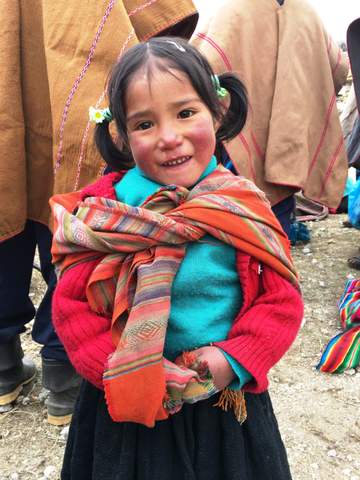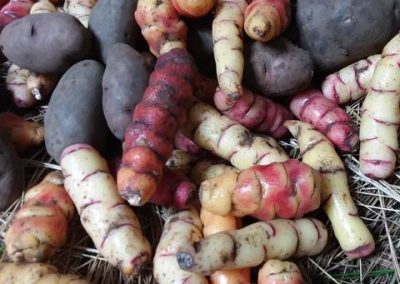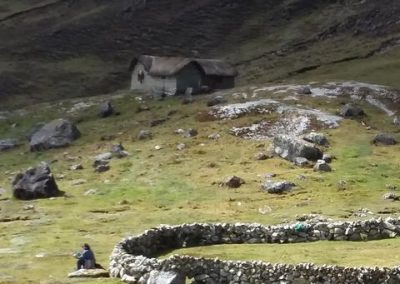Lekepata Village of Hapu Q’ero Nation
Weavers from Lekepata (lay-kay-pah-tuh) hamlet live among six families at 15,000 feet elevation. Their homes lie about 15 miles from the central village of Hapu Grande (hah-poo gron-day). Lekepata was the lifetime home of the paqo (mystic/shaman/healer) Don Marcelo, who died in 2016 when a tree fell on him. Modest and shy, Marcelo had the reputation of the greatest among Q’ero paqos – although few westerners met him.
Women are the primary cooks. Every meal includes potatoes and little else. The husband hikes many miles to gather and carry firewood on his back, which he lays in a wood crib to dry for several weeks. The wife builds the fire of sticks, adding dried llama dung to increase the coals. She puts little potatoes directly on the llama dung coals to roast. The house fills with smoke because the simple cook stoves have no chimneys. [All smoke-free stoves tried to date require more firewood, so most women prefer to keep their original stoves.]
A weaver uses natural fiber colors of the alpaca hair (browns, tans, white, cream, black). She can color the hand-spun yarn in two ways. She can purchase powdered aniline dyes in regional markets to add the brilliant colors preferred to brighten the grey landscape. Or, she can use natural plants and cochineal larva to create the exquisite colors used in the past and preferred by discerning westerners. The natural dyes require more skill and labor to create special textiles imbued with a subtle beauty reflecting the beauty of Pachamama.
Read about how Heart Walk Foundation has built partnerships with small villages to improve daily life and preserve traditional culture and spiritual practices.



